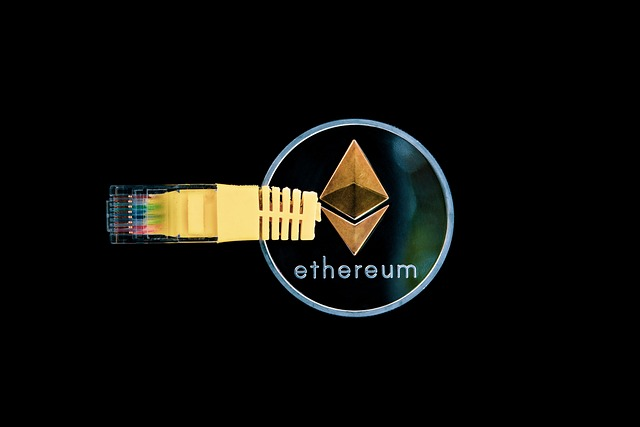Few, if any, assets have had such an astounding rise as cryptocurrencies. And one of the two crypto assets we will be looking at today is even supported by one of the world’s wealthiest and most infamous billionaires.
Ethereum and Dogecoin, two very popular cryptocurrencies, have seen their values grow beyond investors’ wildest dreams. As recently as 2021, Dogecoin saw an unprecedented 23,000% jump. Ethereum surged 24,000% between 2018 and 2019. And that was when Ethereum was worth just $200; today, it is worth a stunning $1,557.17, an almost eight-fold increase.
If you are new to cryptocurrency – both Ethereum and Dogecoin are considered altcoins, which are basically digital currencies that aren’t Bitcoin.
A Brief Introduction to Both Cryptocurrencies
Origin of Dogecoin: From Meme to Mainstream
Beyond its characterisation as an altcoin, Dogecoin is also considered a meme coin. Since their inception, meme coins have entirely disrupted an already wholly disruptive asset class, cryptos. From its founding, Dogecoin was considered an underdog (pun intended) but proved to be an extremely serious crypto competitor fueled by an ardent fanbase that profited from its astounding growth.
But why are these digital currencies called meme coins? Because they were created as a less serious alternative to mainstream cryptocurrencies. The imagery and name come directly from the “doge” internet meme.
Otherwise, it is similar to other cryptos – it is peer-to-peer, runs its own decentralized network and blockchain, also known as a distributed ledger, which uses proof-of-work to validate transactions.
One of Dogecoin’s biggest fanboys is none other than the less-than-serious billionaire Elon Musk. In two cases, he actually openly promoted the meme coin – once when he tweeted about it, and once when he made it Twitter’s logo. And both times it increased Doge’s value.
It can be used for both sending and receiving payments, and making purchases where it is accepted.
Ethereum’s Vision: More Than Just a Cryptocurrency
When it comes to Ethereum vs Dogecoin, the former is a more serious alternative to mainstream cryptocurrencies. Ethereum seeks to position itself beyond its (extremely valuable) crypto asset or digital currency status, offering an entire platform and ecosystem.
Its real call to fame is its ability that allows users to create smart contracts and apps on the Ethereum blockchain network. In fact, the Ethereum network can even host other cryptocurrencies like Uniswap and even decentralized cryptocurrency exchanges. These are also called ERC-20 tokens, or tokens/coins created on the Ethereum network.
The decentralized applications, called dApps, can be hosted on the Ethereum blockchain network. One of the most well-known is the NFT marketplace OpenSea.
A smart contract as the name suggests is kept on the blockchain. There are multiple benefits to this, the biggest being the ability to prevent fraud. Because data in a properly functioning distributed ledger can not be forged or modified.
Additionally, the Ethereum network is a decentralized network, scalable, secure and programmable. Its resulting digital currency is called Ether.
You can buy Ethereum just like other popular cryptocurrencies on a cryptocurrency exchange.
Technical Foundations: A Deep Dive
Dogecoin’s Underlying Mechanics

Although Dogecoin’s branding comes from the doge meme and is different from its crypto-peers, its mechanics are similar. It’s open-source and fuelled by peer-to-peer transactions based on blockchain technology derived from Litecoin.
Dogecoin blockchain technology uses proof of work to verify the transactions of the doge community and is rewarded in the appropriate coin amount.
A benefit of Dogecoin’s scrypt algorithm is that it allows the blockchain to create coins at a low price without any limit. You can buy Dogecoin with fiat currency on cryptocurrency exchanges like other cryptocurrencies.
Ethereum’s Advanced Infrastructure

Smart contracts are the backbone of the Ethereum network. This is very unique functionality among most cryptocurrencies and allows Ethereum users to build decentralized applications and other technology solutions.
Many of the solutions hosted on Ethereum are cryptocurrency market related, including cryptocurrency exchanges, wallets, crypto-funded loans and NFT marketplaces.
Transactions on the Ethereum blockchain are proof-of-stake verified as opposed to proof-of-work like other cryptocurrencies including Bitcoin transactions.
The crypto asset that is produced by Ethereum is Ether, and herein lies its value. When transactions are made and verified on the blockchain, the more of its token is produced, which could cause inflation – but at the same time, transactions are performed in Ether, creating a counterbalance to the increase in volume.
Economic Considerations and Market Dynamics
Dogecoin’s Monetary Policy and Inflationary Nature
Dogecoin (and Ethereum), unlike Bitcoin do not have any limit on their supply. This may seem like a benefit to miners but a boon to investors. As more of a currency is produced, the value of the currency in rotation actually drops. Remember when supply increases, price drops?
The key difference between Dogecoin and Ethereum though is that Ethereum is not only a blockchain or distributed ledger but a platform for both smart contracts and dApps that are all underpinned by the token produced by the same organisation – Ether.
As demand grows for the functionality of the network, so will the demand for the token, balancing out supply and demand. Dogecoin does not enjoy the same ecosystem, if supply increases and demand doesn’t the price will likely fall.
At the same time, if the price falls, the coin might seem more appealing to buyers, counterbalancing supply.
Ethereum’s Supply and Market Implications
Ethereum also lacks a hard cap on mining the underlying token – Ether- but simultaneously offers an ecosystem and platform fuelled by the aforementioned token. As the demand increases for the services and functionality that Ethereum offers, the supply of new coins exists to power these constantly verified transactions.
Transactions carry so-called gas fees, which is the amount of Ether needed to validate a transaction (transactions on the blockchain are generally complex math calculations) and keep the ecosystem secure. High gas fees can be incurred compared to equivalent networks, but the access that Ethereum’s infrastructure gives users is extraordinarily higher than its competitors.
This also increases Ether’s utility as a currency and its intrinsic value.
Real-World Utility and Use Cases
Dogecoin in Commerce
The online community has adopted Dogecoin, which is extensively used to tip online content creators via various social media platforms.
Like other cryptocurrencies, it can be used to pay directly for items and services via pre-paid cards or cards that exchange transactions in FIAT automatically, essentially allowing you to use the digital asset as you would physical money.
Some companies even accept it as a currency – one of the coins biggest fans, Elon Musk, accepts Dogecoin as a payment for SpaceX and Tesla merchandise.
Explore where and how Dogecoin is being used for transactions, donations, and other applications in the real world. Including the Tesla branded “Ludicrously Cozy Throw” for the ludicrously high price of $140.
Ethereum’s Expanding Ecosystem
Ethereum appeals to more than people investing in cryptocurrencies. Developers can create decentralized apps and artists can even sell their artwork as NFTs on Ethereum-hosted marketplaces such as OpenSea. But what does the future look like for Ethereum? Here are just a few of the exciting projects currently being implemented.
- Uniswap v3One of the biggest features of this update is the ability to offer concentrated liquidity, allowing providers to set the conditions for their fees, i.e., a price range trigger.
- MakerDAO – by the creators of the Dai stablecoinOne of the first decentralized DeFi lending protocols that uses its own stablecoin.
- Curve FinanceCurve Finance is a decentralized exchange with a bias toward stability instead of volatility, so theoretically, investors can earn consistent and stable earnings on their new tokens with less risk.
And this is just a very small sample of the myriads of dApps currently being developed within the Ethereum ecosystem.
Security, Scalability, and Development
Dogecoin’s Developmental Challenges and Achievements
Dogecoin launched in December of 2013, created by Jackson Palmer and Billy Markus. Of course, it was caught up in the 2017 cryptocurrency rally. But this was only a small part of Dogecoin’s story.
When it was launched, Palmer wanted to poke fun at mainstream coins. But after seeing the popularity of his satire, Palmer decided to purchase dogecoin.com. This is also when Billy Markus joined, after trying to develop his own failed digital currency.
Markus used other open-source coins like Luckycoin, based on Litecoin, to create Dogecoin. Within two weeks of launching Dogecoin, its value skyrocketed by 300%.
Ethereum’s Ongoing Innovations and Roadmap
As with any ambitious project, Ethereum had to overcome multiple obstacles to become the solution it is today. Ethereum started as a proof-of-work blockchain and in 2015, was forced to increase the difficulty of validating via this method, forcing a fork that uses a proof-of-stake model.
In the 2016 “DAO attack” 3.6 million ETH were taken due to an unsecured DAO contract.
That same year Ethereum also experienced a DoS attack. But it seems that the promise of Ethereum was worth significantly more, even with the tribulations. Fast forward a few years, and Ethereum jumped from around $12 when those unfortunate events happened to a stunning $1,670.10 at the time of writing.
Investment Potential and Community Perception
Dogecoin: Speculative Asset or Viable Investment?
Dogecoin may have started as a meme but, due to its extremely loyal fanbase, and support by significant organisations, including charities and businesses, it has matured into a viable investment opportunity. Unlike its counterparts, Bitcoin and Ethereum, you get maximum value for your money, with a high ceiling for future potential growth.
Certain brokers, such as PrimeXBT allow you to deposit cryptocurrency and trade assets like FIAT currencies, commodities and other cryptocurrencies.
So, if Elon Musk is bullish on Dogecoin, why aren’t you?
Ethereum’s Position in the Investment Landscape
Being the second biggest cryptocurrency by market cap, Ethereum is here to stay. Beyond its value as a digital currency, Ethereum also offers unique functions as a platform with astounding scalability and potential.
Conclusion: Dogecoin and Ethereum – Two Different Visions, One Digital Future
Dogecoin and Ethereum may have key differences, and be difficult when it comes to price predictions, but both have a place in the cryptocurrency landscape and should prove to be a valuable part of any portfolio.
The content provided here is for informational purposes only. It is not intended as personal investment advice and does not constitute a solicitation or invitation to engage in any financial transactions, investments, or related activities. Past performance is not a reliable indicator of future results.
The financial products offered by the Company are complex and come with a high risk of losing money rapidly due to leverage. These products may not be suitable for all investors. Before engaging, you should consider whether you understand how these leveraged products work and whether you can afford the high risk of losing your money.
The Company does not accept clients from the Restricted Jurisdictions as indicated in our website/ T&C. Some services or products may not be available in your jurisdiction.
The applicable legal entity and its respective products and services depend on the client’s country of residence and the entity with which the client has established a contractual relationship during registration.




